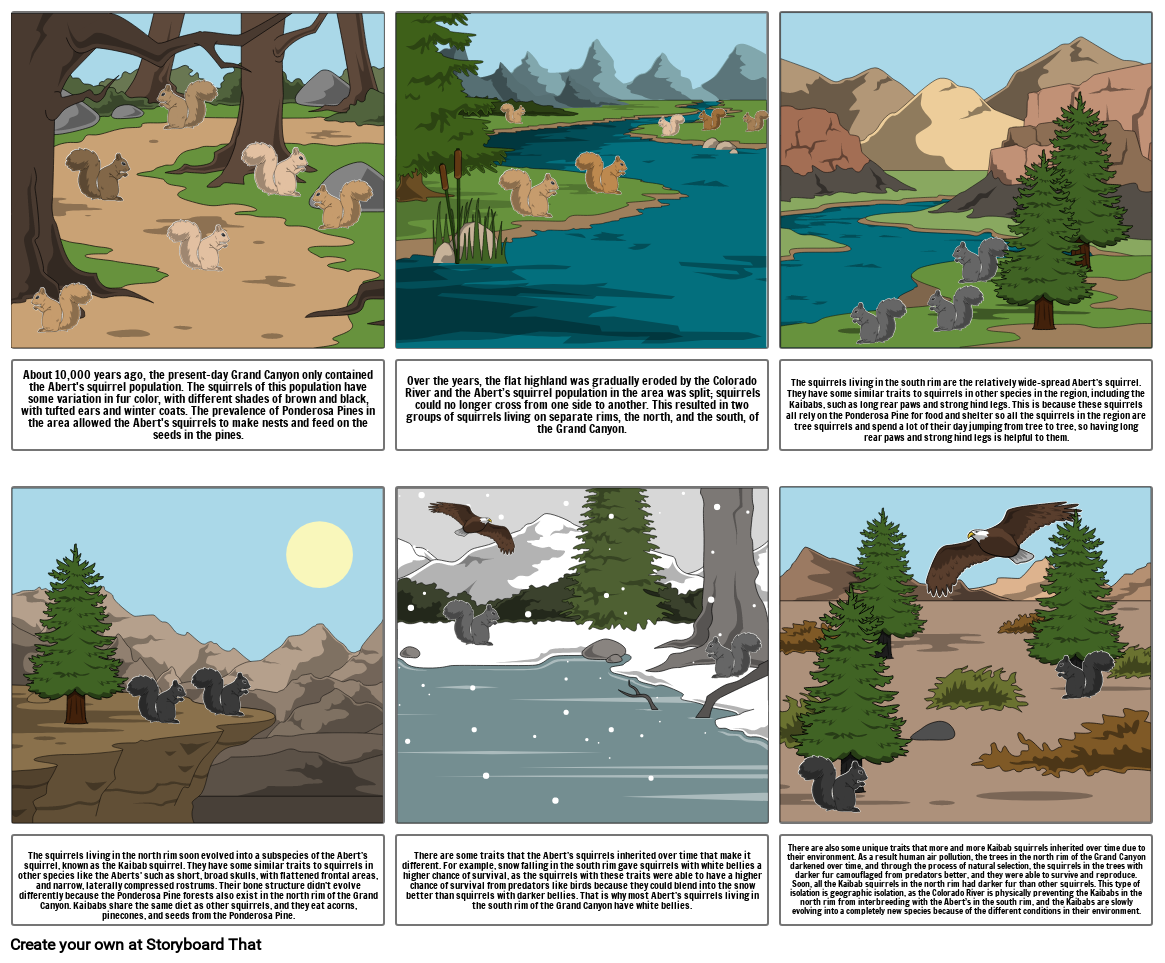Abert's and Kaibab squirrels

Storyboard Text
- About 10,000 years ago, the present-day Grand Canyon only contained the Abert's squirrel population. The squirrels of this population have some variation in fur color, with different shades of brown and black, with tufted ears and winter coats. The prevalence of Ponderosa Pines in the area allowed the Abert's squirrels to make nests and feed on the seeds in the pines.
- Over the years, the flat highland was gradually eroded by the Colorado River and the Abert’s squirrel population in the area was split; squirrels could no longer cross from one side to another. This resulted in two groups of squirrels living on separate rims, the north, and the south, of the Grand Canyon.
- The squirrels living in the south rim are the relatively wide-spread Abert’s squirrel. They have some similar traits to squirrels in other species in the region, including the Kaibabs, such as long rear paws and strong hind legs. This is because these squirrels all rely on the Ponderosa Pine for food and shelter so all the squirrels in the region are tree squirrels and spend a lot of their day jumping from tree to tree, so having long rear paws and strong hind legs is helpful to them.
- The squirrels living in the north rim soon evolved into a subspecies of the Abert’s squirrel, known as the Kaibab squirrel. They have some similar traits to squirrels in other species like the Aberts' such as short, broad skulls, with flattened frontal areas, and narrow, laterally compressed rostrums. Their bone structure didn’t evolve differently because the Ponderosa Pine forests also exist in the north rim of the Grand Canyon. Kaibabs share the same diet as other squirrels, and they eat acorns, pinecones, and seeds from the Ponderosa Pine.
- There are some traits that the Abert’s squirrels inherited over time that make it different. For example, snow falling in the south rim gave squirrels with white bellies a higher chance of survival, as the squirrels with these traits were able to have a higher chance of survival from predators like birds because they could blend into the snow better than squirrels with darker bellies. That is why most Abert’s squirrels living in the south rim of the Grand Canyon have white bellies.
- There are also some unique traits that more and more Kaibab squirrels inherited over time due to their environment. As a result human air pollution, the trees in the north rim of the Grand Canyon darkened over time, and through the process of natural selection, the squirrels in the trees with darker fur camouflaged from predators better, and they were able to survive and reproduce. Soon, all the Kaibab squirrels in the north rim had darker fur than other squirrels. This type of isolation is geographic isolation, as the Colorado River is physically preventing the Kaibabs in the north rim from interbreeding with the Abert’s in the south rim, and the Kaibabs are slowly evolving into a completely new species because of the different conditions in their environment.
Over 30 Million Storyboards Created

